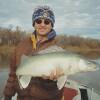Last Saturday morning, June 21, in the aftermath of a storm that ripped through the Bemidji area with straight-line winds up to 120 mph, leaving a path of destruction in its wake, Blane Klemek stepped outside for a firsthand look at the damage.
Birds were singing, and the swans were swimming in the small, shallow lake behind his house, said Klemek, Northwest Region wildlife manager for the Minnesota Department of Natural Resources in Bemidji.
ADVERTISEMENT
Just like any other summer morning.
ŌĆ£They were there, just like they always are,ŌĆØ said Klemek, who lives near Becida, Minnesota, about 12 miles northeast of Itasca State Park. ŌĆ£And I thought, ŌĆśHow the hell did you guys make it through the night like that?ŌĆÖ ŌĆØ

No doubt, the June 20-21 storms that cut a swath of devastation from western North Dakota to northern Minnesota affected thousands of peopleŌĆÖs lives. But what about wildlife such as birds, deer and other critters?
How do they manage to escape ŌĆō and hopefully survive ŌĆō Mother NatureŌĆÖs wrath when such events occur?
ŌĆ£Animals feel that pressure ahead of time and in some cases, they might have a better warning system than we do,ŌĆØ said Doug Leier, outreach biologist for the North Dakota Game and Fish Department in West Fargo. ŌĆ£But at the same time, when (peopleŌĆÖs) houses are getting completely destroyed, so are theirs.
ŌĆ£So, thereŌĆÖs going to be specific mortality.ŌĆØ
ADVERTISEMENT
Inevitable casualties
Nestlings are especially susceptible, Klemek says.
ŌĆ£There will be a lot of nestlings that didnŌĆÖt survive this onslaught, no doubt about it,ŌĆØ Klemek said. ŌĆ£Just walking around my own property assessing damage, IŌĆÖd come across a robin nest here and there and those sorts of things laying on the ground. When you think about it, thatŌĆÖs played out across a vast landscape so lots of birds donŌĆÖt make it.
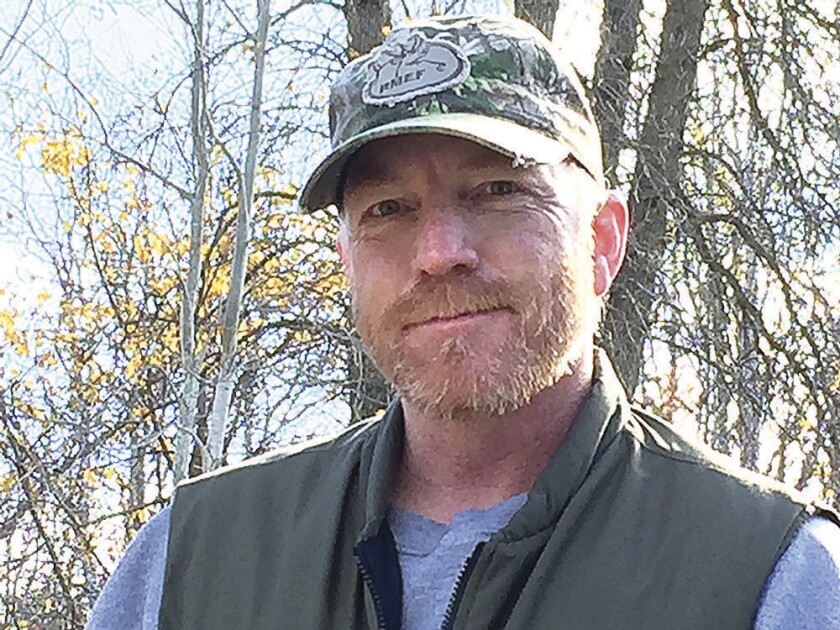
ŌĆ£Lots of birds do, though ŌĆō most survive.ŌĆØ
Wildlife such as deer also likely fared OK in the storm-ravaged areas near Bemidji, Klemek says.
ŌĆ£ThereŌĆÖs going to be no doubt an unfortunate one that happens to get crushed by a fallen tree,ŌĆØ he said. ŌĆ£That certainly is possible, but I think itŌĆÖs rare for things like that to happen.ŌĆØ
As the storm approached, wildlife likely headed for low areas, ŌĆ£the leeward side of things,ŌĆØ just like humans would do to escape the elements, Klemek says.
The swans on the small lake by his yard, probably ŌĆ£just went into the thick cattails and waited the storm out,ŌĆØ he said.
ADVERTISEMENT
ŌĆ£I donŌĆÖt know if this is the case with all wildlife, but they do seem to have a sense that gives them the ability to maybe anticipate impending weather events and begin preparing for that,ŌĆØ Klemek said. ŌĆ£So, I think theyŌĆÖve got a one-up on us in some respects.ŌĆØ
Widespread tree damage
The damage to trees is perhaps the most obvious sign of the stormŌĆÖs wrath and its impact on natural resources in the Bemidji area, Klemek says. Thousands of massive, stately red pine and white pine trees were wiped out, snapped like giant matchsticks or uprooted completely.
Photos donŌĆÖt do justice to the devastation, Klemek says.
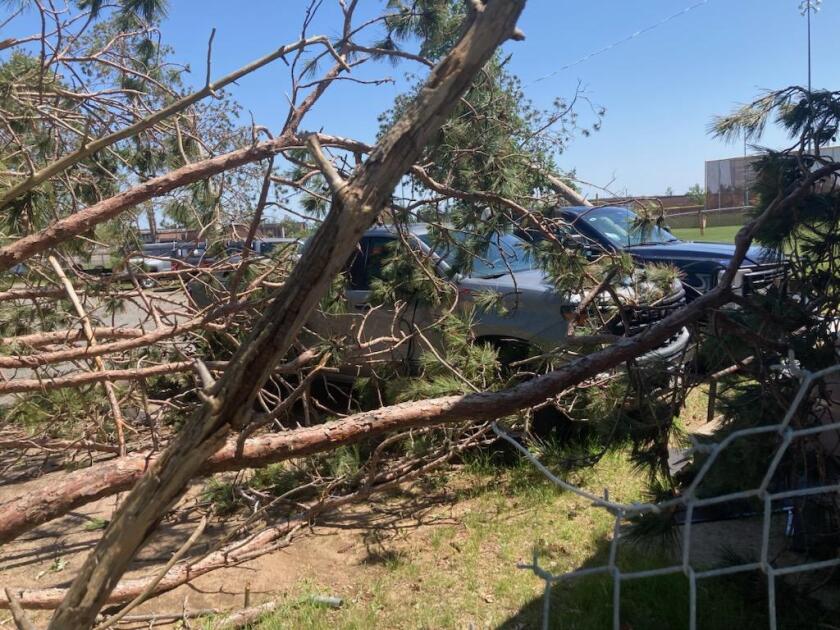
ŌĆ£Bemidji will never look the same,ŌĆØ he said. ŌĆ£I donŌĆÖt have any giant white pine and red pine (in my yard). I have a lot of young white pine and red pine, but none of them sustained damage. But some of the big ash, big oak and lots of aspen were just completely uprooted and came crashing down.
ŌĆ£ItŌĆÖs shocking, when you walk about and drive around and see the carnage. ItŌĆÖs just hard to comprehend until you see the scope of the damage plus the expanse of it.
ŌĆ£ItŌĆÖs heartbreaking.ŌĆØ
ADVERTISEMENT
Assessing the aftermath
In a Tuesday phone interview, Adam Munstenteiger, regional forestry manager for the DNRŌĆÖs Northwest Region in Bemidji, said the immediate priority was getting service restored to DNR offices and clearing forest roads and trails affected by the storms, both in Bemidji and surrounding areas, and north of Fourtown, Minnesota, where a tornado touched down Sunday night, affecting access to some forest roads and trails in Beltrami Island State Forest.
ŌĆ£Folks that are recreating out in those areas can expect to encounter either roads that are closed or impassable,ŌĆØ Munstenteiger said. ŌĆ£It will just take us some time to get things opened back up again.ŌĆØ
State forest road closures at dnr.state.mn.us/trailconditions/listing.html.
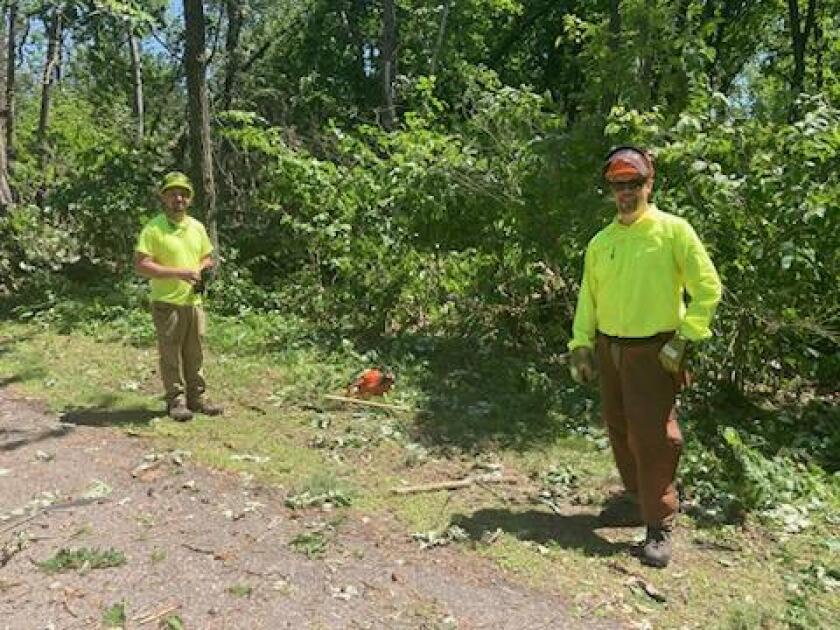
DNR staff were scheduled to fly the storm-affected areas Friday, June 27, to assess forest lands affected by the storm and where timber can be salvaged, Munstenteiger said.
ŌĆ£Once we have some data to make decisions from, we kind of start to triage things,ŌĆØ he said. ŌĆ£We try and figure out: How big were the trees? Were they merchantable? Were they mature? Is everything down, or is it just a scattered tree here and there? Is it a big enough blowdown that it would make sense for a logger to move equipment into? ItŌĆÖs got to be a couple of acres, typically, to make sense for somebody to move equipment in there.ŌĆØ
ThereŌĆÖs also the question of access, and whether the sites are reachable in the summer or only in the winter when the ground is frozen.
In the case of pine trees, time is of the essence, Munstenteiger said. Once theyŌĆÖre down, theyŌĆÖre susceptible to ŌĆ£blue stain,ŌĆØ a fungus-driven discoloration that makes the logs less marketable. Blue stain can set in within a month or less, depending on weather conditions, Munstenteiger said.
ADVERTISEMENT
ŌĆ£In my experience, loggers and mills, being stewards of the forest, they will reprioritize whatever theyŌĆÖre doing to come in and assist when thereŌĆÖs salvage sales in the forest, so theyŌĆÖre really good partners that way,ŌĆØ Munstenteiger said.
Even so, he says, the DNR wonŌĆÖt be able to salvage more than ŌĆ£a fraction of the acresŌĆØ of trees affected by the storm.
ŌĆ£ItŌĆÖs over such a broad landscape, and weŌĆÖve got to focus on larger areas that are blown down, where it makes sense for loggers to work,ŌĆØ Munstenteiger said. ŌĆ£ThereŌĆÖs always going to be those patches of (downed trees) on the landscape. We just canŌĆÖt recover it all.ŌĆØ
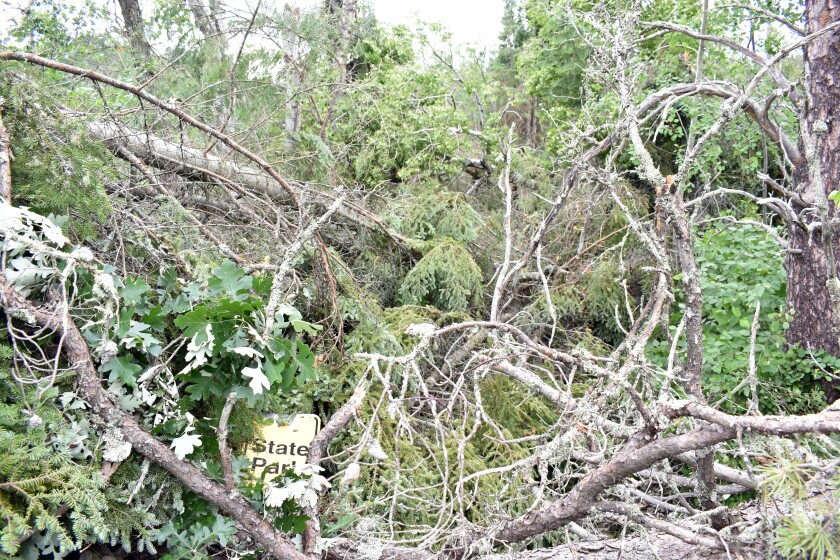
Forestry also will work with DNR wildlife personnel and staff at Lake Bemidji State Park to assess how downed trees on wildlife management areas and state park lands will be managed, he said. Each DNR division has its own playbook, be it state, policy or unit plans for how to address affected areas.
Meanwhile, life goes on in the natural world, said Klemek, the DNR regional wildlife manager.
ŌĆ£It doesnŌĆÖt look normal around here, but wildlife, theyŌĆÖre still doing their thing,ŌĆØ Klemek said. ŌĆ£And I imagine, in their way, theyŌĆÖre assessing damage, too.ŌĆØ
- On the web:
ADVERTISEMENT



